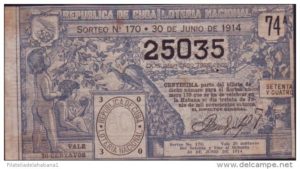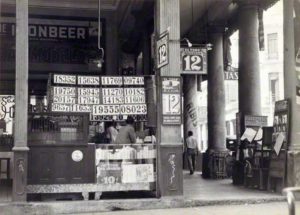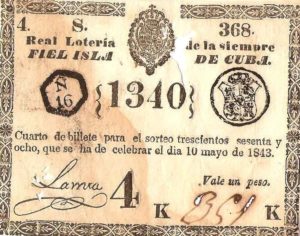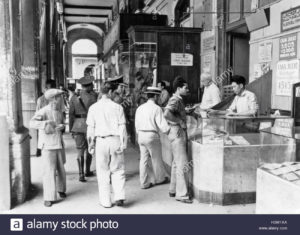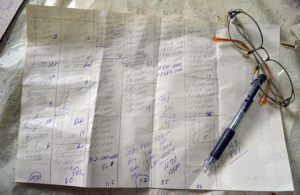BRIEF HISTORY OF THE CUBAN NATIONAL LOTTERY.
On September 11, 1812, the first draw of the “REAL LOTTERY OF THE FIEL ISLAND OF CUBA” was held with two major prizes of ten thousand and five thousand pesos, with winners being 13,406 and 13,380, both sold in Santiago de Cuba.
According to the official document, the prizes were as follows:
1 prize of $ 10,000
1 prize of $ 5,000
2 $ 2,000 prize
4 prizes of $ 1,000.
20 prizes of $ 200.
30 prizes of $ 100.
From the fourth draw, in 1813, he was entitled “National Lottery of Cuba, denomination that was not changed until drawing number fourteen, which is possible due to the influence of the constitutional regime created by the Cortes of Cadiz. Well
The Cuban lottery, inspired by the one of Mexico, was also developed on the basis of the ordinance of the “Real Lottery of Spain” and was part of the peninsular. This name would remain for a short period, since in 1815 it returns to take its original name, “REAL LOTTERY OF THE FAITHFUL ISLAND OF CUBA” and would remain until the last draw of the colonial period.
In this way it was in operation until November 30, 1898, which although it should have been the penultimate draw, ended up being the last, since the Spanish government decided to suspend the December, although the tickets have already been sold.
In the magazine “El moro muza”, in Havana in October 1863, the following was published: “… since Christmas is approaching, let us try our luck, comrades. You know that on Good Night, the raffle of a large lottery will be held in Madrid, in which there will be a prize of 300,000 pesos, a prize of 100,000, a prize of 50,000, a prize of 20,000 and a great many of respectable sums. Naturally, with so many and so fat the prizes, the tickets have to cost expensive … but, if much is paid much is expected, and thus, I think we go to “La Dominica”, whose owners are here in charge of expending such tickets, And let’s try to prove fortune.
During the American intervention the lottery would be prohibited, which they identified as a source of “vices and colonial corruption”, but in 1903, after establishing the Republic of Cuba, a group of senators elaborated a project with the objective of restoring the institution, reestablishing itself In that same year, when the project on this game is taken to the camera and to the senate for its analysis and approval.
Prestigious voices spoke against this bill, but after a long debate, the bill was approved by the House and Senate on January 5, 1905, with 25 votes in favor and 12 against.
However, our first president, Don Tomás Estrada Palma, refused to approve it and returned it to Congress a day later, waiting until the arrival of General Liberator Army José Miguel Gómez to reinstate the National Lottery through the Law of July 7, 1909.
This Law that organized the Lottery Income, creates the “National Lottery of Cuba” and a department attached to the Secretary of Finance – General Directorate of the National Lottery – which will always have a director general, nominated by the President of the Republic And with the approval of the Senate. The last draw of this stage, would be held on December 31, 1958.
On February 16, 1959, the National Lottery Income was abolished and the National Institute of Savings and Housing (INAV) was created, in its place, presided over by Pastorita Núñez, who turned it into a program of popular benefit . But again the “vice of the past”, now “capitalist”, was resumed, and the last drawing took place on Saturday, March 16, 1968.
Something difficult to understand, since only in its first year of life, with the funds saved by INAV, was the Camilo Cienfuegos Deal in Havana, with 1 360 homes, a shopping center, sports fields, parks and green areas .
Since then, the lottery in Cuba is considered illegal … although it has not stopped playing, because the Cuban people are very player. Many believe that the Cuban lottery is also a “popular tradition,” because on the island, despite being illegal, the meaning of the numbers of the charade is known. Who does not know that 8 is dead, 15 pretty girl, 12, 33, 47, …? And the 1? !
I have “heard” that Miramar and other neighborhoods where the CUCs move have made banks that collect and pay in foreign currency …
CORTA HISTORIA DE LA LOTERÍA NACIONAL CUBANA.
El 11 de septiembre de 1812 se celebró el primer sorteo de la “REAL LOTERÍA DE LA FIEL ISLA DE CUBA” con dos premios mayores de diez mil y cinco mil pesos, resultando ganadores el 13,406 y el 13,380, ambos vendidos en Santiago de Cuba.
Según el documento oficial, los premios fueron los siguientes:
1 premio de $ 10,000
1 premio de $ 5,000
2 premio de $ 2,000
4 premios de $ 1,000.
20 premios de $ 200.
30 premios de $ 100.
A partir del cuarto sorteo, en el año 1813, se le tituló “Lotería Nacional de Cuba, denominación que no se varió hasta el sorteo número catorce, lo que es posible se debiera la influyencia del régimen constitucional que crearon las Cortes de Cádiz. Pues
la lotería cubana, inspirada en la de México, se desarrollaba igualmente sobre la base de la ordenanza de la “Real Lotería de España” y formaba parte de la peninsular. Este nombre permanecería durante un corto período, ya que en 1815 vuelve a tomar su nombre original, “REAL LOTERIA DE LA FIEL ISLA DE CUBA” y así se mantendría hasta que se realizara el último sorteo del período colonial.
De este modo estuvo funcionando hasta el 30 de Noviembre de 1898, que aunque debió haber sido el penúltimo sorteo, terminó siendo el último, ya que el gobierno español decidió suspender el de Diciembre, no obstante ya haberse vendidos los billetes.
En la Revista “El moro muza”, de La Habana en Octubre de 1863 se publicó lo siguiente: “…puesto que la Navidad se acerca, probemos fortuna, compañeros. Ya sabéis que en el día de Noche Buena se verificará en Madrid la rifa de una gran lotería, en la cual habrá un premio de 300,000 pesos fuertes, otro de 100,000, otro de 50,000, dos de 20,000 y otros muchos de sumas respetables. Naturalmente, siendo tantos y tan gordos los premios, han de costar caros los billetes…pero, si mucho se paga mucho se espera, y así, opino que vayamos a “La Dominica”, cuyos dueños son aquí los encargados de expender dichos billetes, y veamos de probar fortuna.
Durante la intervención norteamericana se prohibiría la lotería, a la cual identificaban como fuente de “vicios y corrupción colonial”, pero en 1903, tras establecerse la República de Cuba, un grupo de senadores elaboraron un proyecto con el objetivo de restablecer la institución, restableciéndose en ese mismo año, cuando el proyecto sobre este juego es llevado a la cámara y al senado para su análisis y aprobación.
Prestigiosas voces se pronunciaron en contra de este proyecto de ley, pero después de un largo debate, el proyecto fue aprobado, por la cámara y el senado, el 5 de enero de 1905, con 25 votos a favor y 12 en contra.
No obstante, nuestro primer presidente, Don Tomás Estrada Palma, se negó a aprobarlo y lo devolvió al Congreso un día después, teniéndose que esperar hasta la llegada al poder del general del Ejército Libertador, José Miguel Gómez, para restablecer la Lotería Nacional mediante la Ley del 7 de julio de 1909.
Esta Ley que organizó la Renta de la Lotería, se crea la “Lotería Nacional de Cuba” y un departamento anexo a la Secretaria de Hacienda -Dirección General de la Lotería Nacional- que tendrá siempre un director general, nominado por el Presidente de la República y con la aprobación del Senado. El último de sorteo de esta etapa, se celebraría el 31 de diciembre de 1958.
El 16 de febrero de 1959 se anunció la supresión de la Renta de la Lotería Nacional y la creación en su lugar del “Instituto Nacional de Ahorro y Viviendas” (INAV), presidido por Pastorita Núñez, quien la convirtió en un programa de beneficio popular. Pero de nuevo se retomó lo de “vicio del pasado”, ahora “capitalista”, y el último sorteo se realizó el sábado 16 de marzo de 1968.
Algo difícil de entender, pues solo en su primer año de vida, con los fondos ahorrados por el INAV, se construyó el Reparto Camilo Cienfuegos en la Habana del Este, con 1 360 viviendas, un centro comercial, campos deportivos, parques y áreas verdes.
Desde entonces, la lotería en Cuba se considera ilegal… aunque no ha dejado de jugarse, porque el pueblo cubano es muy jugador. Muchos consideran que la lotería cubana también es una “tradición popular”, porque en la Isla, a pesar de ser ilegal, se conoce el significado de los números de la charada. ¿Quién no sabe que el 8 es muerto, el 15 niña bonita, el 12, el 33, el 47,…? ¿Y el 1? ¡!
He “oído” decir que por Miramar y otros barrios por donde se mueven los CUC, han hecho bancos que recogen y pagan en divisa…
Agencies/CubaMemorias/Derubín Jácome/Excerpts/Internet Photos/Arnoldo Varona/TheCubanHistory.com
THE CUBAN HISTORY, HOLLYWOOD.



